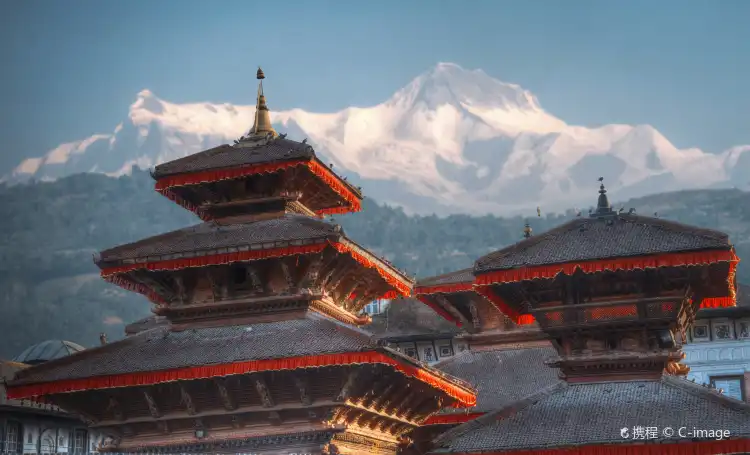
Search Kathmandu Hotels
Enter your dates for the latest hotel rates and availability.
Swipe up to view more
Filter by:
Hotel Star Rating
≤2345
Popular Filters
9+8+7+6+We found 809 hotels for you in Kathmandu
Choose your travel dates to see the latest prices and deals.
Most Booked
Lowest Price
Closest to Downtown
Highest Rated

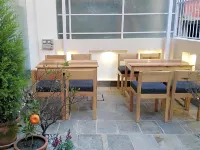
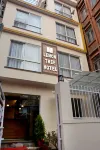
Hotel near Thamel,Kathmandu 100% of visitors choose this area
GGuest User 2023.08.05
I stayed for 2 nights, it didn't feel safe for me as a solo woman traveller. One the first night around 11pm there were 3-4 men shouting and laughing and knocked my door. I was scared and called the reception. The phone wire was not connected to the phone, i have to hold it tight to the phone while i was speaking. It was a terrifying experience. When in emergency even the phone wasn't working! the receptionist took 30 min to for the men to calm down. The next day morning the receptionist told me they men moved out. But i saw them in the evening in the hotel. Didn't feel safe. Again, the men, shouting and aloud. Still i couldn't sleep there, awake whole two nights i stayed there, didn't feel safe. The place was clean. Location was good.
58 reviews
8.1/10
Price from
£17
per night



Hotel near Sinamangal,Kathmandu
神神光彩霞 2022.05.31
The service attitude is very good. I can speak a little Chinese. The breakfast is good. You can also add some egg rolls. The taste is good. The room is clean and very quiet. It is very close to the airport.
30 reviews
6.9/10
Price from
£30
per night
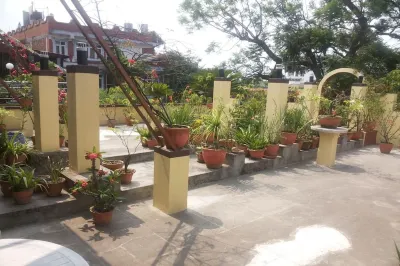

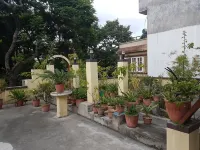
Hotel near Thamel,Kathmandu 100% of visitors choose this area
GGuest User 2023.10.28
Wow. What a Charging place. Very well located in a quite Street right in the center of Thamel.
So calm and quite. Very big rooftop filled with plants, rooms are simple and very clean. Hot shower 24 hours a day and the nicest and caring hosts.
This guesthouse is one of the oldest Thamel and it has the old vibe of Thamel, before it gotten to be so touristic. So it is a bit outdated but this is part of his charm.
A great place to a long stay.
5 reviews
8.7/10
Price from
£16
per night

You Might Like
Kathmandu Hotels with BreakfastKathmandu Hotels with Twin RoomKathmandu Hotels with 1 Double BedKathmandu Hotels with Swimming PoolKathmandu Hotels with Free Cancellation


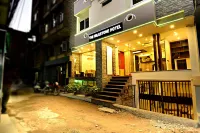
Hotel near Thamel,Kathmandu 100% of visitors choose this area
AAnonymous User 2024.01.04
Convenient location with restaurants and laundry nearby. The staff was also very kind and I was able to spend comfortably.
49 reviews
8.4/10
Price from
£16
per night
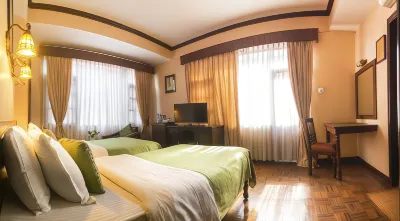
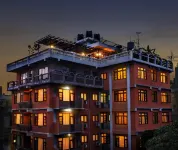

Hotel near Thamel,Kathmandu 100% of visitors choose this area
GGuest User 2023.05.13
The stay was comfortable and the staff was courteous. The roof top restaurant is excellent in terms of ambience and cocktails. The approach to the hotel is narrow and the taxis cannot reach the hotel in the evenings. We had to walk with luggage on the road to check in.
23 reviews
7.4/10
Price from
£21
per night

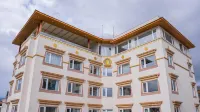
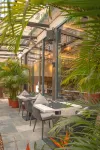
Hotel near Dhalko,Kathmandu
GGinLiau 2023.09.12
im so lucky to find this brand new hotel nearby Thamel. Not in tourist area but just nearby, and convenient to get all what you want. The hotel got a coffee shop at the lobby, and one rooftop restaurant/bistro which can have a panorama view of the Kathmandu city. Basic facilities such as disposer toothbrush provided, tea, coffee, towel provided. No gym and pool, but is okay for me cos i enjoy the view on rooftop restaurant most of the time.
49 reviews
8.9/10
Price from
£28
per night
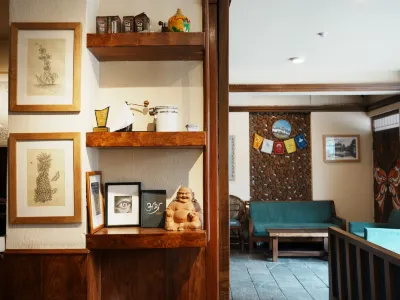
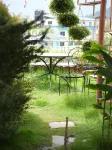

Hotel near Kathmandu
FFengjiajie 2025.02.24
📍Location: It takes more than ten minutes to walk to the Tamil Shopping Festival. It is relatively quiet to sleep at night. There is a gourmet restaurant recommended by the boss lady nearby. It is delicious (Nepalese food + Indian food). You can ask the boss lady when you check in. We ate there for a few days.
🏠Room configuration: The most important thing to pay attention to when booking a hotel in Nepal is whether the bath water is hot enough♨️and whether it is large enough. It may be the problem of the double bed room I booked (room number: 301). The water was warm after ten minutes. After telling the front desk, I opened another room specifically for bathing. As a result, the hot water was very strong and warm, and it was very comfortable to bathe. I stayed in the room in the picture for three nights (301). I didn’t succeed in taking a hot bath once. The front desk changed the room and took a good hot water. My companions booked this hotel together. They all said that the hot water in other rooms was very strong and hot. Maybe it was just my room that was not good, so you can pay attention when checking in. Most of them are actually very strong and hot water. The bathroom is very clean and relatively large. Everything else is very good.
🍽️Breakfast: This hotel includes breakfast, which is French toast with coffee (drinks can be exchanged), which is delicious😋For this breakfast, I don’t really want to change hotels
❤️Service: The boss is very enthusiastic, including the front desk guy (who knows a little Chinese), who helped our group exchange currency💰 (exchange rate 19:5), and the front desk guy can help call motorcycles and taxis with inDrive. If you have any questions, tell the front desk guy, he is very active in helping. On the last day of leaving the hotel, the flight was at 7 o'clock in the morning, and he got up at more than 5 o'clock to help me call a taxi. Thank him!
I am very lucky to meet a very considerate and reliable hotel in a strange country. I recommend staying.
Outstanding
32 reviews
9.4/10
Price from
£18
per night
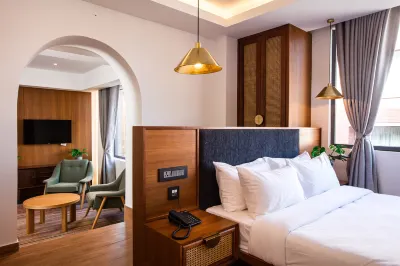
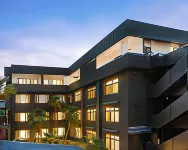
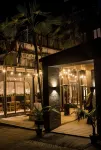
Hotel near Lazimpat,Kathmandu
Yyen yin 2024.05.23
I'm truly impressed by service by nomad stuffs This was my 2nd hotel stayed in Katmandu ..the location is not far from sightseeing place ,i used in drive app to travel around and it's cheap .Room was clean ,new no quiet .My special thanks to Roshan for helping me during check in and check out .I would definitely recommend Nomad hotel to friends and family .
Very Good
57 reviews
9.3/10
Price from
£31
per night
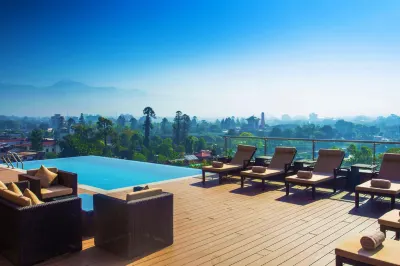
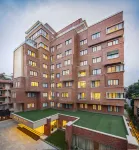

Hotel near Thamel,Kathmandu 100% of visitors choose this area
ССергей Нифонтов 2024.08.01
Good hotel, convenient location away from noisy streets. In general we liked everything. One time we didn't put the shoes, but brought on first demand.
A delicious and diverse breakfast.
Very Good
102 reviews
9.2/10
Price from
£56
per night



Hotel near Thamel,Kathmandu 100% of visitors choose this area
GGuest User 2023.06.21
I found this property from the google and it’s a first class hotel. Friendly staff, highly appreciated for the front office team did great service for me until i checkout. Breakfast was awesome. I’ll recommend this property for the others as well. Hopefully next time also i’ll choose this property. Thank you.
45 reviews
8.6/10
Price from
£22
per night

Top 15 Premium Hotels in Kathmandu
See all
Discover our curated selection of premium hotels in Kathmandu for your next stay

No.
1
9.4/10
117 reviewKathmandu Marriott Hotel
Hotel near Hattisar, Kathmandu
"Great stay!""Friendly owner"
Select dates to view prices
No.
2
9.1/10
44 reviewHilton Kathmandu
Hotel near Narayanhiti, Kathmandu
"Great stay!""Delicious breakfast"
Select dates to view prices
No.
3
9.1/10
8 reviewVarnabas Museum Hotel
Hotel near Tangal, Kathmandu
"Good Location"
Select dates to view prices
No.
4
8.9/10
54 reviewThe Soaltee Kathmandu
Hotel near Kalimati, Kathmandu
"Good Location"
Select dates to view prices
No.
5
8.4/10
71 reviewHyatt Regency Kathmandu
Hotel near Baudhatinchule
"Friendly owner""Great stay!"
Select dates to view prices
No.
6
8.2/10
69 reviewHotel Yak & Yeti
Hotel near Narayanhiti, Kathmandu
"Delicious breakfast"
Select dates to view prices
No.
7
9.5/10
74 reviewDusit Princess Kathmandu
Hotel near Lazimpat, Kathmandu
"Great stay!""Friendly owner"
Select dates to view prices
No.
8
9.3/10
62 reviewAloft Kathmandu Thamel
Hotel near Thamel, Kathmandu
"Delicious breakfast""Friendly owner"
Select dates to view prices
No.
9
9.3/10
57 reviewHyatt Centric Soalteemode Kathmandu
Hotel near Kalimati, Kathmandu
"Great service""Great stay!"
Select dates to view prices
No.
10
9.1/10
42 reviewBaber Mahal Vilas - the Heritage Hotel
Hotel near Singha Durbar, Kathmandu
"Friendly owner""Great design"
Select dates to view prices
No.
11
8.9/10
50 reviewHotel Barahi Kathmandu
Hotel near Thamel, Kathmandu
"Friendly owner""Great rooms"
Select dates to view prices
No.
12
9.4/10
66 reviewBasera Boutique Hotel
Hotel near Singha Durbar, Kathmandu
"Friendly owner""Great stay!"
Select dates to view prices
No.
13
8.0/10
45 reviewRadisson Hotel Kathmandu
Hotel near Lazimpat, Kathmandu
"Great location"
Select dates to view prices
No.
14
9.0/10
40 reviewRamada by Wyndham Kathmandu Dhumbarahi
Hotel near Bansbari, Kathmandu
"Friendly owner""Great rooms"
Select dates to view prices
No.
15
8.8/10
47 reviewThe Malla Hotel - Thamel, 2 km to Swayambhunath Temple
Hotel near Thamel, Kathmandu
"Good Location"
Select dates to view pricesLatest Reviews for Kathmandu hotels
See all
Explore genuine reviews and ratings from real travellers to find the perfect accommodation for your needs.
9.5/10
Outstanding
GGuest UserThe hotel staff are exceptionally friendly, especially the manager, Mr. Gangar, who greeted us every morning with a warm smile. The location is convenient, about 20 minutes from Kathmandu Durbar Square. The hotel room was quite nice, but there were two minor issues: the flooring was sticky and uncomfortable to walk on barefoot, and there were no slippers provided. Additionally, there was no hand shower or shower cap available. Despite these small inconveniences, it was overall a pleasant stay at a good hotel.
Magnificent Hotel
Hotel near Thamel, Kathmandu 100% of visitors choose this area
Price per night from:£14
9.5/10
Outstanding
GGuest UserThe hotel service was almost impeccably superb.
I arrived and was departed by the same polite receptionist, Manoj.
The bed was cozy,the toilet was nice (equipped with a range of toiletries) and the interior room was just wonderful.
Breakfast was decent and simple.
The staff were always ready to serve you.
The welcoming atmosphere was somewhat delightful.🫠
The manager even helped us with our planning of Kathmandu- Pokhara and provides all the necessary details that we need to know over there. Saves us a lot of time. 👍🏼
The location was just right. Easily walking access to nearby food place and market for essential buyings.
Just that the tv programs were all news channels,that was a slight bummer but most of the time we were out so it doesn't really matter.
And our room view was limited maybe because we were on the lower floor but the home style feels overcame the restriction.
There is a saying:
”Perfect goodbyes leave nothing unsaid, thereby there's nothing left to come back for.”
Overall, even with just 18 rooms in this hotel, I didn't regret making it my destination to rest at Kathmandu.
It was truly a lovely place and I hope it prospers widely in the future.
Lastly, for all the staff in Kumari Boutique Hotel who appreciate our existence that one week stay,thank you a lot! 🙏🏼 🙏🏼
Kumari Boutique Hotel
Hotel near Thamel, Kathmandu 100% of visitors choose this area
Price per night from:£31
9.2/10
Very Good
GGuest UserWe had the pleasure of staying at this exceptional hotel for a total of 6 nights, and we couldn't be more thrilled with our experience. From the moment we arrived, the staff displayed an authentic and warm hospitality that made us feel truly at home. Their genuine friendliness and willingness to assist with every request went above and beyond our expectations.
One of the highlights of our stay was the remarkable cleanliness and tranquility of our room. It was evident that great care was taken to ensure a pristine environment, allowing us to relax and unwind in utmost comfort. The icing on the cake was the superb internet reception, which allowed us to stay connected seamlessly throughout our stay.
Our stay was punctuated by delightful mornings indulging in an exquisite breakfast spread. The puri or chapati and curry quickly became our favorites, perfectly complemented by the aromatic masala tea and the flavorful masala omelette – a true culinary delight!
The hotel's al fresco dining experience was an absolute treat. The ambiance was charming, and the food left an indelible mark on our taste buds. With each meal, we explored a plethora of different dishes, each more tantalizing than the last. It's safe to say that the culinary offerings exceeded our expectations in every way.
A noteworthy mention is the hotel's convenient proximity to Boudha Stupa, a mere 10-minute walk away. This made our visits to the stupa incredibly convenient and allowed us to fully immerse ourselves in its serene atmosphere.
What sets this hotel apart is not only its remarkable amenities and services but also the unique opportunity it offers. The daily free yoga and meditation sessions held within the monastery on the premises are truly transformative. We highly recommend inquiring about the schedule from the attentive hotel staff – it's an experience that added immeasurable value to our stay.
In summary, our time at this hotel was nothing short of exceptional. The combination of attentive staff, immaculate rooms, delectable cuisine, and the added touch of free yoga and meditation sessions make this hotel a standout choice for anyone seeking a memorable stay near Boudha Stupa. We wholeheartedly recommend this establishment to fellow travelers looking for an unforgettable experience.
Thank you to the entire staff for making our stay truly remarkable – we eagerly anticipate the opportunity to return!
Tip: Indulge in delightful puri & curry breakfast, relish al fresco dining, rejuvenate with free daily yoga. A tranquil oasis near Boudha Stupa.
9.1/10
GGuest UserWe knew the service would be good as soon as we booked, and within hours we received a welcome email, listing the ways we could contact them if we needed to.
On the pick up at the airport, they were speedy and efficient and the taxi ride only took us 20 minutes with traffic.
As we walked through the door we were blown away by the interior decoration, only then to find that hotel had been a former palace!
Historic artifacts and pictures were strewn through the hallways and the outside only matched the royal feel with perfection.
We stayed in the royal suite, with a big bed and balcony. The staff were great, the breakfast was standard for off peak times and although the location isn't in the depth of Thamel, the area most will go out for eating and drinking, it was within 30 minutes drive of most landmarks and as it was the ambassedy/ office worker area, there was a nice vibe.
There were some things that can't be controlled. The hotel did a good job of providing heat as the weather in February is still chilly.
The pollution was real. Especially as you walk nearer the streets, something to think about if you are sensitive to this. Apart from that, It was all really wonderful. Niraj Yadav the receptionist and the team, we thank you dearly.
9.1/10
肥肥頭仔One of the newly built hotel in Kathmandu, though it’s not close to the central tourist district, Thamel area but it’s just 20mins drive from the Airport, so quite convenient.
Since my booking including an airport pick up and drop off, so my whole journey was very smooth. Thank you much to the concierge arrangement for the logistic.
As for catering, I have only had their breakfast buffet which was also including in my booking, through my four days breakfast I didn’t get bored yet since they offered a wide variety of food options. Westerns parties, Chinese food, local Nepalese food and also Indian ones. The head chef and his catering team are super attentive and thank you so much for taking good care of my stomach during my stay.
Room, since it’s newly built, all facilities are up to standards, and the sound proofing is quite ok to a light sleeper like me. Water pressure from the shower is good; and the amenities are well provided.
Besides to our beds. There are usb and charging ports, very convenient.
Other facilities:
Gym: small one but well equipped
Spa: there’s a spa on the top floor but I haven’t had time to try
Rooftop bar: very nice ambient should go during the sunset
Overall, if I would ever visit Kathmandu again Hilton is my only option.
Ps. I stayed at this hotel in Feb 2025
8.9/10
JJason2023Pros
Great location for exploring Themal and provided you are not too high up, you shouldn't hear any road noise as it's set back. I was on the 4th floor and could hear the incessant beeping motorbikes but had moved from the first floor where i heard none (but was directly above the kitchen so could hear banging and chairs scraping from around 6am). 2nd floor is probably a good choice
Staff were all excellent
Room cleaned daily with 2 large bottles of water provided each day
Breakfast was ok - decent variety of fruit, local and western with custom eggs. Coffee was instant though.
Air con has heat facility
No deposit required on check-in
Toiletries provided
Cons
Some noise depending on your room location - dont stay in 107 or room directly above the kitchen/restaurant
No safe for passport, cash etc in room
Breakfast area isn't particularly clean i.e. dirty table cloths/mats
Poor standard of fixtures/fittings e.g. gaps in windows and doors, curtains dont quite close right, dirty shower curtain, the rooms have seen better days but for the price its still good value.
No coffee or milk in room (or 3-in one)
No phone charging point near the bed
Bathroom mat was old and dirty, no floor towel
Tips: take extra passport photo if you intend to get a sim card at the airport, unlimited data one with nepal telecom cost me $10 - signal was mostly ok.
Get your currency before you arrive or take enough to convert there, the atm machines are expensive
Taxi from airport to Themal should be around 350 rupees working on 50 rupees per km plys 30 rupees start charge.
You will be hounded relentlessly by people from the second you leave the plane for tour services etc. It may seem impolite but dont make eye contact, say no thank you and keep walking, otherwise you will spend your entire trip speaking to them.
Right now its cold at night, pack accordingly.
Be prepared to pay for everything, every temple, every place of historical interest - foreigners are charged around 1000-2000 rupees each time. E.g. all the Durbar squares, main stupas and temples.
Don't assume that because Nepal is a developing country it is cheap. It isn't. In fact i found it comparable to some developed countries and not cheaper than say Thailand. A meal would cost me around 1000 rupees. In a smaller more local place you may pay 500.
Don't take your new trainers, it's a very dirty, dusty city but exactly what you would expect if you've ever seen it on TV - it's all part of the experience.
For exploring all of the main parts of Kathmandu, id say 5 days is a good amount of time. I recommend the everest helicopter tour but on that note i will say that tours are very expensive here, more expensive than even Hong Kong, Thailand, etc!! I ended up walking to the main temples, Chandragiri, Bakhtapur for the more local experience.
8.9/10
GGuest UserI didn't realise the hotel location is so fantastic.
Near Asan Bazaar, Kathmandu Durbar Square and in the heart of Thamel.
The staff are very friendly and helpful.
The room reasonably clean.
If I ever return to Kathmandu, I will stay in Hotel de Universal again.
Thank you so much for the great service.
8.4/10
GGuest UserThe hotel has a nice view from the outside. Breakfast is not included in the price and needs to be paid extra. There were sporadic power outages during the stay. I was a little worried and scared at first, but later I turned off the air conditioner and the power outages were alleviated.
It is very close to the airport and the Boudhanath temple. You can see the panoramic view of the hotel when the plane takes off.
8.0/10
GGuest UserThere is a garden and the restaurant is also in the garden. The single bed is a little small but very comfortable. There is a terrace facing the garden. Fortunately, it closes at 8 or 9 in the evening, so it becomes very quiet immediately.
7.3/10
CChristinalvxingdarenBecause I didn't catch the plane, I found a small hotel temporarily in the early morning.
facility:
Although the hotel is small, the hardware facilities are relatively good in Nepal, which is good.
There is air conditioning, hot water and card swipe door locks, which are advanced.
But there is no hair dryer either…
health:
I still saw the hair...
environment:
Room comfortable
Serve:
The breakfast provided is relatively simple (Picture 6 is the breakfast menu)
The service attitude of the staff at night is good, but the service attitude during the day is average.
In the evening, my friend in Kathmandu sent me to the hotel to pick up my luggage and take me to the airport. The hotel staff was even more hospitable.
FAQs About Hotels in Kathmandu
What hotel deals are available in Kathmandu?
Trip.com provides various promotions and discounts for users all year round. You can check the promotions page to see what promotions are available on Trip.com.
What is the average cost of a hotel in Kathmandu?
For hotels in Kathmandu, the average price on weekdays is £38, the average price on weekends (Friday–Saturday) is £38.
What are the most popular hotels in Kathmandu?
Kathmandu has many popular hotels. Whether you're travelling for business or going on holiday, Airport Diana Hotel, Aryatara Kathmandu Hotel and SRK SERVICE APARTMENT AND HOTEL are preferred hotels.
What are the recommended luxury hotels in Kathmandu?
Kathmandu has many luxury hotels with different styles. Hilton Kathmandu, Aloft Kathmandu Thamel and Hyatt Regency Kathmandu are very popular.
Which hotels in Kathmandu provide high-quality breakfasts?
Hilton Kathmandu,Aloft Kathmandu Thamel and Hyatt Regency Kathmandu provide high-quality breakfast. Start your day with a delicious breakfast!
Which hotels in Kathmandu are pet friendly?
Hotel Nepal Bhumi, Sara's Backpackers Hotel and Durbar Hotel & Residence allow pets. Take your pets with you during your stay!
Which hotels in Kathmandu provide fitness facilities?
Airport Diana Hotel, Aryatara Kathmandu Hotel and Hotel Aashraya Home Pvt. Ltd. provide fitness facilities. Satisfy your fitness needs even while travelling!
Which hotels in Kathmandu have swimming pools?
Fairfield by Marriott Kathmandu, Aloft Kathmandu Thamel and Hyatt Regency Kathmandu are hotels with swimming pools. Stay at any of these hotels to enjoy a swimming pool!
Which hotels in Kathmandu provide airport transfer services?
Not familiar with Kathmandu? Airport Diana Hotel, Aryatara Kathmandu Hotel and Hotel Aashraya Home Pvt. Ltd. provide airport transfer services.
Which hotels in Kathmandu are worth visiting for their spa experience?
Feel tired from travelling? Aryatara Kathmandu Hotel, Hotel Aashraya Home Pvt. Ltd. and Hilton Kathmandu provide highly rated spa services.
Which hotels in Kathmandu have hot springs?
Want to experience hot springs in your hotel? Himalayan Suite Hotel, Kantipur Village Kathmandu and Divine Kathmandu Hotel have hot springs. Book now!
Which hotels in Kathmandu provide free WiFi?
Whether you're travelling on business or going on holiday, Internet connection is an essential condition for travel. Airport Diana Hotel, Aryatara Kathmandu Hotel and SRK SERVICE APARTMENT AND HOTEL are popular hotels with free Wi-Fi.
Kathmandu Hotels Information
| Highest Price | £254 |
|---|---|
| Lowest Price | £6 |
| Number of Reviews | 11,673 |
| Total Properties | 809 |
| Average Price (Weekdays) | £38 |
| Average Price (Weekends) | £38 |
Keep Exploring
Most Viewed Hotels in Kathmandu
Kathmandu Hotels near Attractions
Hotels near KasthamandapHotels near Pachali Bhairav Yuwa PariwarHotels near National Museum of NepalHotels near Bhimsen TowerHotels near Kathmandu Durbar SquareHotels near ThamelHotels near Garden of DreamsHotels near Pashupatinath TempleHotels near Kumari ChowkHotels near Swoyambhu MahachaityaHotels near Tribhuvan International Airport
Flights from Popular Cities to Kathmandu
Cheap flights from Aberdeen to KathmanduBirmingham to Kathmandu plane ticketsFlights from London to KathmanduDoha to Kathmandu plane ticketsFlights from Dhaka to KathmanduFlights from Istanbul to KathmanduDubai to Kathmandu plane ticketsFlights from Kolkata to KathmanduCheap flights from Edinburgh to KathmanduLondon to Kathmandu plane ticketsNew Delhi to Kathmandu plane ticketsNewcastle to Kathmandu plane ticketsPokhara to Kathmandu plane ticketsBhairawa to Kathmandu plane ticketsCheap flights from Lhasa to KathmanduFlights from Manchester to KathmanduCheap flights from Manchester to KathmanduCheap flights from Bhadrapur to Kathmandu